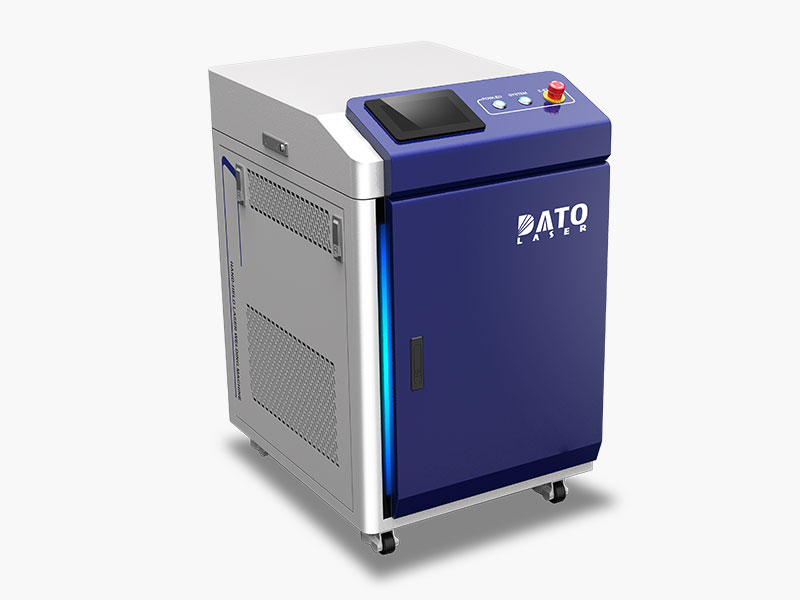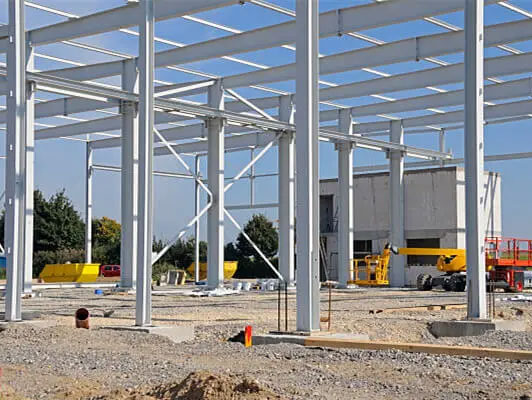Hand-held vs. Robotic Laser Welding: Which One Is Right for Your Business?

Making the right choice between handheld and robotic laser welding systems can significantly impact your manufacturing efficiency and bottom line. As the industry continues to evolve, both options offer unique advantages that cater to different production needs. Let's explore how each system could benefit your business and help you make an informed decision.
Understanding Handheld Laser Welding Systems
The DT-HJ Handheld Series represents the latest advancement in portable laser welding technology. These systems have revolutionized the welding industry by offering unprecedented flexibility and ease of use. Imagine having the power of precise laser welding in a compact, portable format that your operators can easily maneuver around large workpieces or use in tight spaces.
Handheld laser welding systems excel in situations requiring adaptability and quick setup. They're particularly valuable for businesses that handle diverse projects with varying welding requirements. The intuitive design allows operators to achieve professional results with minimal training, making it an excellent choice for companies looking to enhance their welding capabilities without extensive retooling or workforce training.
The Power of Robotic Laser Welding
On the other hand, the DT-HJR Robotic Series showcases the pinnacle of automated welding technology. These systems bring consistency and tireless precision to high-volume production environments. When your business demands identical welds across hundreds or thousands of pieces, robotic systems deliver unmatched repeatability and quality control.
Robotic systems particularly shine in manufacturing settings where the same welding pattern needs to be reproduced consistently. They can operate continuously with minimal supervision, significantly reducing labor costs while maintaining exceptional quality standards. The advanced programming capabilities allow for complex welding patterns that would be challenging to achieve manually.
Making the Right Choice for Your Business
Several key factors should influence your decision between handheld and robotic systems:
Production Volume
For businesses with varying production needs or small to medium batch sizes, the DT-HJ Handheld Series offers the flexibility to adapt quickly to different projects. However, if your operation involves high-volume production of identical parts, the DT-HJR Robotic Series would likely provide better efficiency and cost-effectiveness.
Workforce Considerations
Handheld systems require operators but offer a gentler learning curve. They're ideal for businesses with experienced welders who need to upgrade their capabilities. Robotic systems initially require skilled programmers but can then be operated by less experienced staff, potentially reducing long-term labor costs.

Space and Setup Requirements
Handheld units offer superior portability and can be easily moved between workstations or job sites. Robotic systems require dedicated floor space and more extensive setup but provide unmatched efficiency for fixed-location operations.
Investment and Return Considerations
While handheld systems typically represent a lower initial investment, robotic systems often deliver superior long-term cost benefits for high-volume production through increased efficiency and reduced labor costs.
The Hybrid Approach
Many successful businesses find that incorporating both systems provides the best solution. The DT-HJ Handheld Series can handle variable or low-volume projects, while the DT-HJR Robotic Series manages high-volume production runs. This combination offers maximum flexibility and efficiency across different production scenarios.
Future-Proofing Your Investment
Both our handheld and robotic systems are designed with future expansion in mind. The DT-HJ Series can be easily integrated into existing production lines, while the DT-HJR Series can be programmed for new products as your business grows. Regular software updates ensure both systems remain at the cutting edge of welding technology.
Making Your Decision
Consider starting with a detailed analysis of your current and projected production needs. Our team at Dato can help evaluate your specific requirements and recommend the most suitable solution. Whether you choose the flexibility of handheld systems, the automation of robotic systems, or a combination of both, we're committed to supporting your business's success with advanced laser welding technology.
Ready to explore how laser welding can transform your production capabilities? Contact our experts today for a personalized consultation and demonstration of our DT-HJ Handheld Series and DT-HJR Robotic Series. Let us help you choose the perfect laser welding solution for your business's unique needs.
Related Blogs
-
 Exploring the Safety, Precision, and Industrial Benefits of Laser Surface CleaningIn today’s fast-paced industrial world, where quality, efficiency, and sustainability are top priorities, manufacturers are constantly seeking better ways to clean metal surfaces without compromising material integrityBlog
Exploring the Safety, Precision, and Industrial Benefits of Laser Surface CleaningIn today’s fast-paced industrial world, where quality, efficiency, and sustainability are top priorities, manufacturers are constantly seeking better ways to clean metal surfaces without compromising material integrityBlog -
 A Complete Guide by DATO and LeapionIn modern industry, surface preparation and maintenance play a crucial role in achieving high-quality manufacturing results. Laser cleaning machines have emerged as one of the most innovative, efficient, and environmentally friendly tools for removing contaminantsBlog
A Complete Guide by DATO and LeapionIn modern industry, surface preparation and maintenance play a crucial role in achieving high-quality manufacturing results. Laser cleaning machines have emerged as one of the most innovative, efficient, and environmentally friendly tools for removing contaminantsBlog -
 Laser cleaning machines are revolutionizing industrial surface cleaning by offering a faster, safer, and more eco-friendly alternative to traditional methods. Whether removing rust, paint, oil, oxide, or other surface contaminants, laser cleaning has become a cutting-edge solution in manufacturing,Blog
Laser cleaning machines are revolutionizing industrial surface cleaning by offering a faster, safer, and more eco-friendly alternative to traditional methods. Whether removing rust, paint, oil, oxide, or other surface contaminants, laser cleaning has become a cutting-edge solution in manufacturing,Blog -
 Introduction: Transforming EV Battery Manufacturing Through Laser TechnologyThe electric vehicle revolution has accelerated dramatically over the past decade, bringing with it unprecedented challenges and opportunities in battery manufacturing. As global automakers commit billions to electrificationBlog
Introduction: Transforming EV Battery Manufacturing Through Laser TechnologyThe electric vehicle revolution has accelerated dramatically over the past decade, bringing with it unprecedented challenges and opportunities in battery manufacturing. As global automakers commit billions to electrificationBlog













